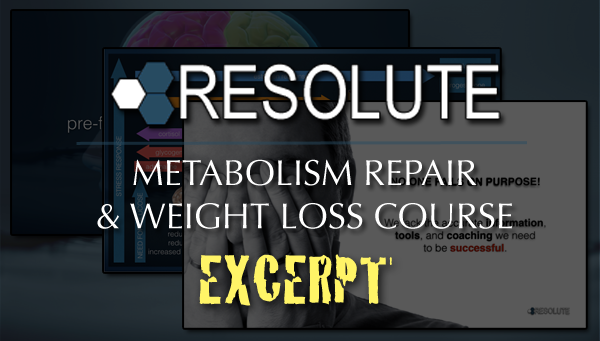The most significant rule of human physiology is the SAID principle, or our specific adaptation to imposed demands.
This means that when a stressor effects us we specifically react to it. If it is repeated over time then we will continue to adapt over time.
So every time we take a step we are practicing our walking form. If we have good form, we get really good at good form, but that also means if we have bad form we get really good at bad form.
Walking is easily the most important movement in our lives. This is because we do lots of reps everyday, it involves our entire body, and we don’t have to think about it.
But what happens if I have an injury that requires a cast. It could be a cast on the lower body such as the ankle or the upper body such as an arm. In either case, the way I walk for the next six or so weeks has now been changed. In that time I will probably take between 1.8 to 2 million steps with bad form.
It only takes about two hours of stimulation to start making a permanent change in our brain. Of course as we have already learned “the greater the load the greater the learning.” So, if I felt pain with every step I took, the increased stress would produce change even quicker.
Now, lets look at a different type of stimulus. Advertising. How long does it take to reach enough stimulus to change the way we look at ourselves?
Remember, when I was 119 pounds and ate everything in site? I self identified as being just a normal person. However, once I became a trainer and I self identified as a representative of the fitness industry I always felt I needed to lose weight.
I had surrounded myself with images of women that I was constantly comparing myself too. In fact, Butch bought me a subscription to Latina magazine for a while because he thought the models in that magazine were more representative of my body type then in the magazines I was looking at.
But here’s where it gets interesting. Researchers using functional MRI exposed participates to various deceptive advertisements judged to be believable, moderately deceptive, and highly deceptive.
They were able to observe two distinct patterns in the brain in regards to deceptive advertising. If the advertisements are believable then the brain uses a single stage pattern to evaluate the ad. But if the brain feels the advertisement is deceptive then a second pattern comes into play using a different structure in the brain.
This is a great defense mechanism, but for it to work it has to be able to recognize deception. When I first became somewhat obsessed with constantly comparing myself to fitness models my brain was under the assumption that they all walked around everyday looking as great as they do on the magazine covers.
Then when I went through the training to prepare for the bikini competition my understanding started to change. In the weeks leading up to the competition we increasingly got stricter with what we were eating as well as how much.
Then in the final week or so my coach told me I needed to start taking incredible amounts of potassium in order to displace my sodium. This put my already famine starved body into a state of forced dehydration.
The more I found out about the fitness modeling industry I found out that at this stage of dehydration just before a competition that they do most of their photoshoots. In fact, they may do a whole years worth of photos in one day or in the course of one week.
Then I found out the extinct to which photoshop is used in everything we see. Videos showing how models are photoshopped started showing up in social media. And for about a year I followed a website that would show new ads and point out how you could tell they were photoshopped.
Even now a couple years later whenever I pick up a magazine in the grocery store I instinctively look for the tell-tale signs of manipulation.
But even with that awareness to key me into the deception, I still instinctively compare myself to these impossible standards of beauty.
Brene Brown describes American culture as one of deep scarcity where our fundamental opinion of ourselves is that we are – never good enough, never smart enough, never pretty enough, never lean enough, and on and on.
Lynne Twist captures this sentiment perfectly when she writes, the first thing we do in the morning as soon as we wake up is think “I didn’t get enough sleep.” and the last thing we do at night before going to bed is think “I didn’t get enough done.”
Brene Brown goes on to say that one of the characteristics of a culture of scarcity is that of comparison. In our culture we establish our self-worth and our relevance in comparison to other people.
So, if our brains specifically adapt to the demands imposed on it, and we practice comparing ourselves to others, and thinking we are never good enough, guess what happens?
We get really good at conditional-delayed-happiness. I think I just coined a term. But conditional-delayed-happiness can never be achieved because we have adapted our brains to always plan for a future time to be happy with ourselves.
And as long as that time is in the future, it can never be now.
This is an excerpt of the RESOLUTE online weight loss and metabolic repair course inspired by the work of Dr. Ray Peat, Dr. Broda Barnes, Dr. Brene Brown, Dr. James Prochaska, Dr. Martha Beck, Dr. Judith Beck, and Dr. Hans Selye.
Taiso Fitness and Nutrition
If you are looking for a shared personal training experience try Taiso Fitness and Nutrition. We are Tacoma’s fitness and nutrition gym for people who want to get out of pain or improve performance, who need immediate, measurable results, and want to make educated decisions to take control of their health.
Shared personal training provides the coaching of a personal trainer with the social support of a bootcamp style class.
Set up a complimentary consultation, or start a 21 Day Risk Free Trial. Stay up to date on the latest information through our website at www.taisofitness.com
Looking for an online course to help lose weight by repairing your metabolism and lowering your stress? Try RESOLUTE The Step-By-Step Program for People Who Want To Repair Their Metabolism.

